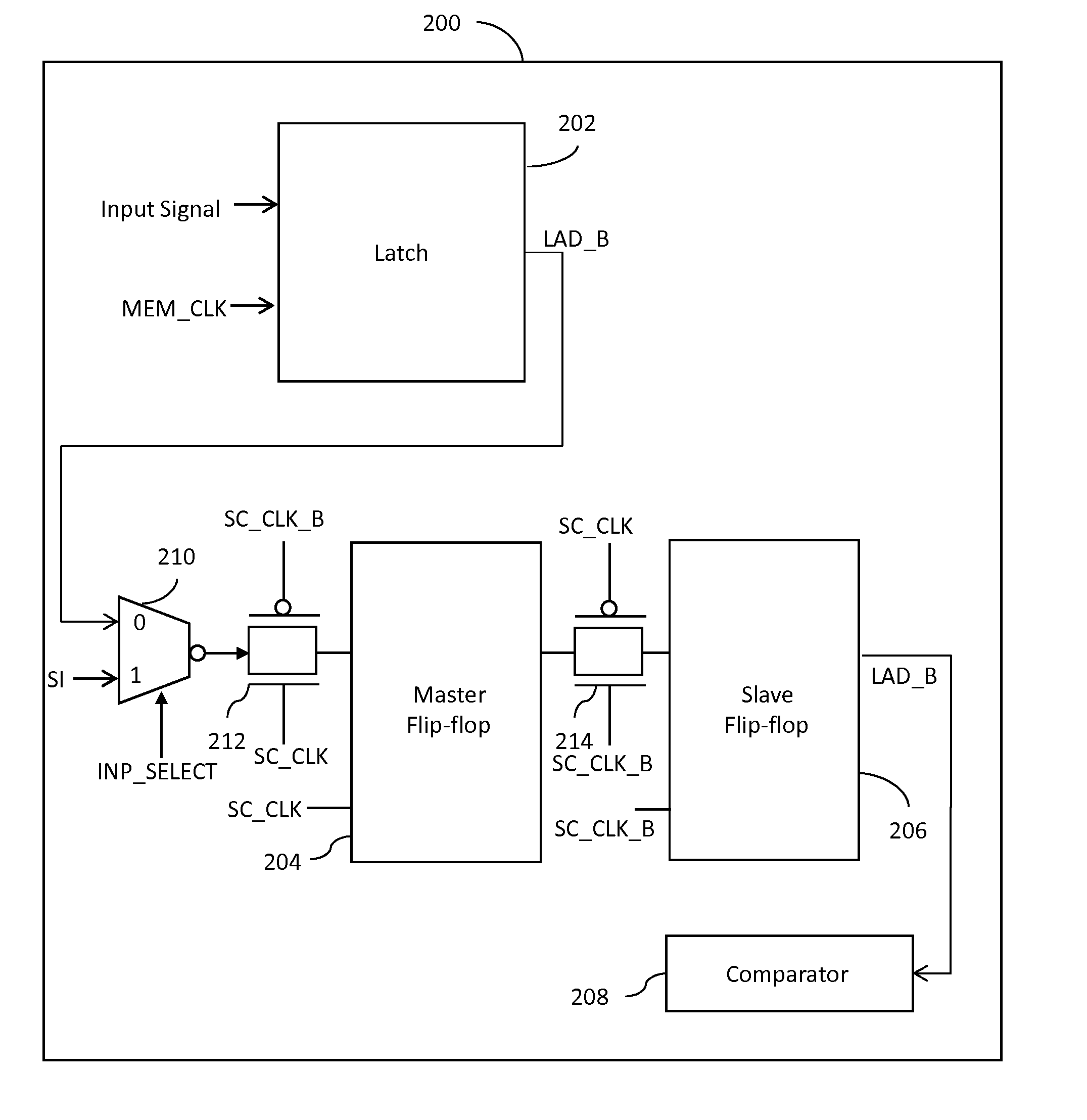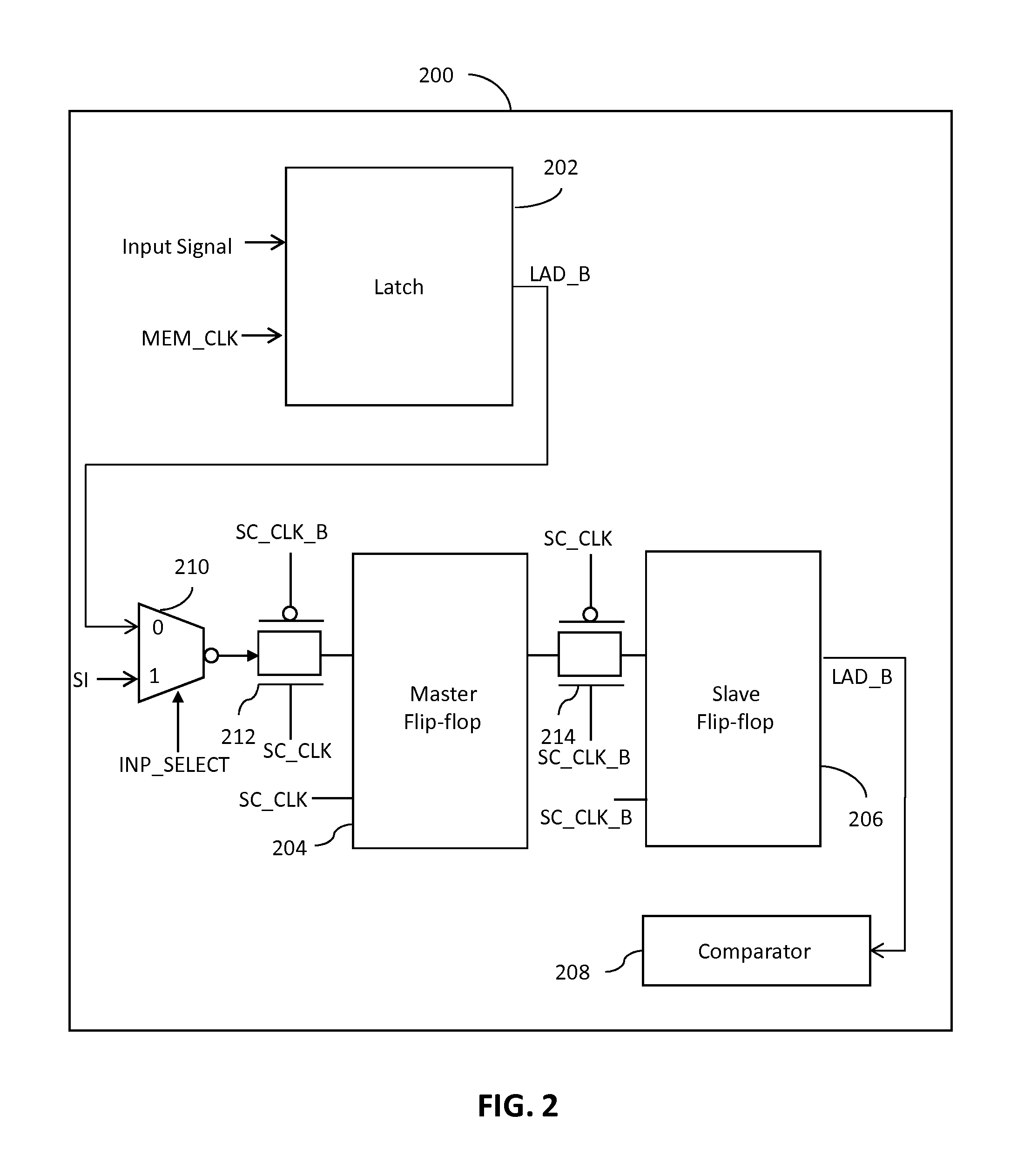System and method for soft error detection in memory devices
a memory device and soft error detection technology, applied in the field of semiconductor memory devices, can solve the problems of inability to detect soft errors, and inability to correct or faulty operation of electronic devices,
- Summary
- Abstract
- Description
- Claims
- Application Information
AI Technical Summary
Benefits of technology
Problems solved by technology
Method used
Image
Examples
Embodiment Construction
[0014]The detailed description of the appended drawings is intended as a description of the currently preferred embodiments of the present invention, and is not intended to represent the only form in which the present invention may be practiced. It is to be understood that the same or equivalent functions may be accomplished by different embodiments that are intended to be encompassed within the spirit and scope of the present invention. In the description, the term multiplexer has been abbreviated as mux.
[0015]In an embodiment of the present invention, a system for detecting a soft error during a memory read / write operation in a memory device is provided. The system includes a latch, a master flip-flop and a slave flip-flop. The latch has a clock input terminal for receiving a first clock signal and an input terminal for receiving input data corresponding to the memory read / write operation. The latch latches the input data at the beginning of the memory read / write operation, in res...
PUM
 Login to View More
Login to View More Abstract
Description
Claims
Application Information
 Login to View More
Login to View More - R&D
- Intellectual Property
- Life Sciences
- Materials
- Tech Scout
- Unparalleled Data Quality
- Higher Quality Content
- 60% Fewer Hallucinations
Browse by: Latest US Patents, China's latest patents, Technical Efficacy Thesaurus, Application Domain, Technology Topic, Popular Technical Reports.
© 2025 PatSnap. All rights reserved.Legal|Privacy policy|Modern Slavery Act Transparency Statement|Sitemap|About US| Contact US: help@patsnap.com



